
Honoring Alexander Rose
A tribute to Alexander Rose as he steps down from his role as Long Now's founding Executive Director, as told by the people who know him best.
After more than 26 years of dedicated service to The Long Now Foundation, Alexander Rose will be stepping down from his role as Executive Director to focus on The Clock of the Long Now, along with his research into the world’s longest-lived organizations.
For the past quarter century, Alexander Rose – known to his friends and colleagues simply as Zander – has been the engine behind so much of Long Now’s work. Under his leadership, The Long Now Foundation has gone from a fledgling nonprofit to a living, thriving organization, with a vibrant membership program, and twenty years of thought-provoking Talks. He also created The Interval, our combination cocktail bar, cafe, and gathering space in Fort Mason, San Francisco and is an active steward of The Clock of the Long Now.
Zander’s approach to guiding the Foundation has impacted every single one of us at Long Now. In order to properly commemorate his time here, we talked to the people he worked most closely with among Long Now’s staff, Board of Directors, and associates to paint a whole picture of Zander — as Long Now’s leader, but also as a friend and dedicated member of our community.
Origins
When The Long Now Foundation was still in a primordial state in the midst of the 01990s, its co-founders Stewart Brand, Danny Hillis, and Brian Eno ran the show. But as the Foundation grew and began to get to work on its core projects, it quickly became clear that Long Now needed a dedicated employee to manage The Clock and The Library. Stewart immediately sought out Zander, who he had known since Zander was just a kid in the junkyards and dockyards of Sausalito, California. Stewart served as “adult supervision” to paintball games and other adventures on the Sausalito waterfront, and to Stewart, Zander’s qualities as a “natural born leader” were clear from a young age. Kevin Kelly, another founding board member and denizen of the Sausalito waterfront, agreed, noting that even at a young age Zander was a tinkerer and skilled paintball tactician, “immediately trying to improve” the crude early paintball equipment and using it to “crush” Kevin, Stewart, and all other challengers.
When Stewart reached out to Zander more than a decade later, Zander, by then a recent graduate of Carnegie Mellon who was looking for work in the field of industrial design, was at first uncertain. As recounted in Whole Earth, John Markoff’s 02022 biography of Stewart Brand, Stewart also helped Zander get job interviews with a number of companies from the contemporary crop of San Francisco Bay Area technology startups. Yet even as he pursued those interviews, Zander couldn’t help but be captivated by the promise Long Now’s Clock and Library projects offered, even in a nascent form.
In the end, his home would be The Long Now Foundation, becoming the organization’s first full time employee and a general project manager, creative leader, and jack-of-all-trades in the Foundation’s early operations. From his first meeting with Zander, Danny Hillis was impressed by his “very practical sense of building things and getting them to work.”
Clock Maker
The two would work closely together for years on the preliminary design and prototyping of The Clock of the Long Now. Zander provided a key understanding of, in Danny’s words, the “poetry and the philosophy of the Clock” from the very start. He was able to balance The Clock’s dual nature, holding it as “a machine to be engineered but, on the other hand, a story to be told.”
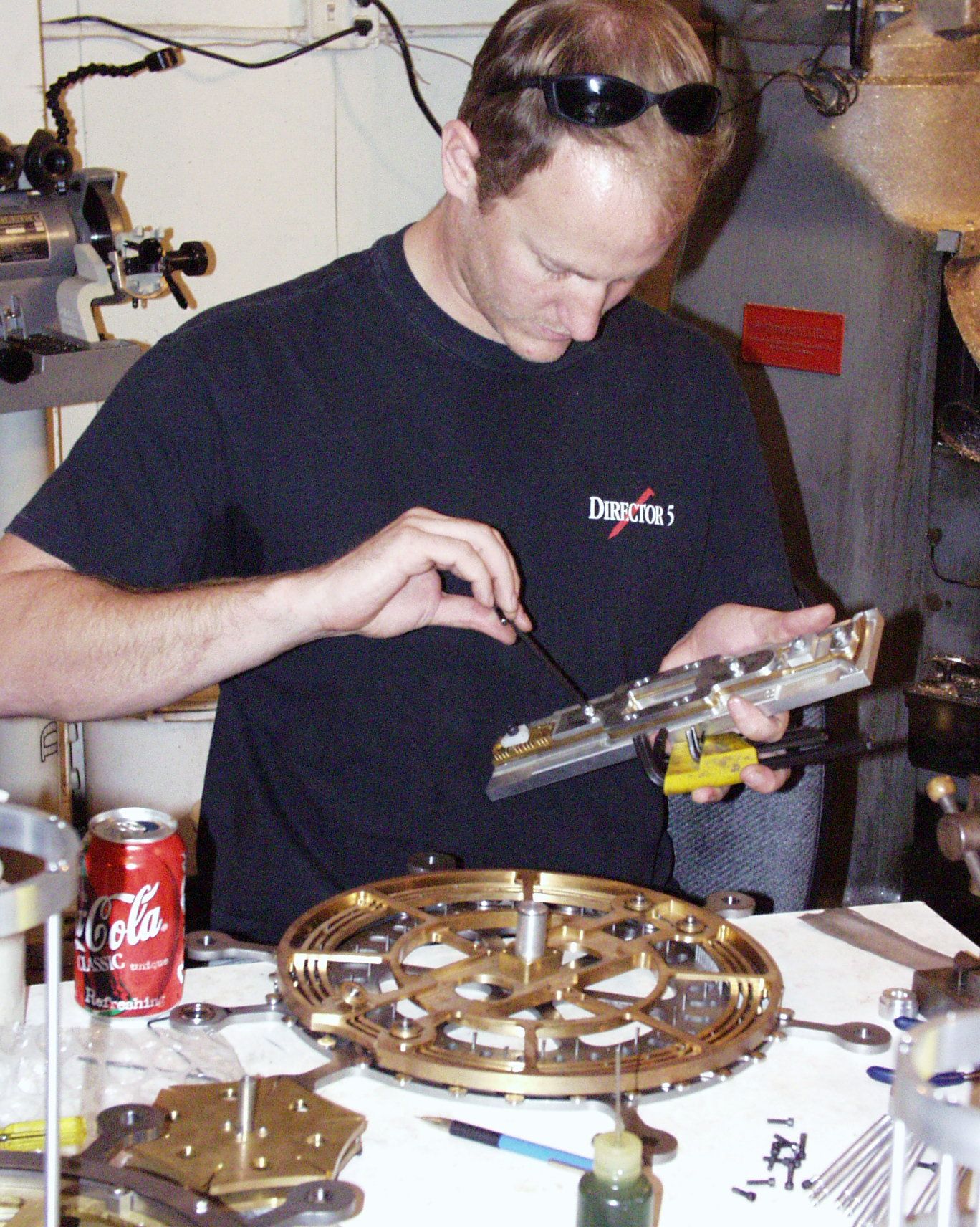


One early Clock design moment where Zander’s sensibility shone through was in the design of the Clock’s face. In Danny’s recollection, he brought a rough sketch of the astronomical lines he wanted depicted on the Clock’s face to Zander, who proceeded to turn it into the iconic rete design that still serves as part of Long Now’s brand to this day.


For the last few years of the 01990s, Danny, Zander, and a small team of collaborators worked tirelessly to get the prototype ready for their “very hard deadline”: New Years Eve 01999. Without Zander, Danny told us, they wouldn’t have made it:
“I brought my whole family up there and everyone at Long Now was gathered in the Presidio, where we were sharing a space with the Internet Archive. We had finally got all the pieces put together, but when we got them together, we realized that there was a bug in the direction of rotation of one shaft and that it was going to, when it hit the millennium, go from saying, oh, 01999 to 01998 instead of 02000 — the wrong direction.”
“So, there were hours to go before New Year's Day and we had been working on it and I had been traveling and I just said, ‘oh, well this is just kind of hopeless.’ And I actually fell asleep at that point because I was thinking ‘I don't know what's gonna happen, but I am exhausted.’ So I fell asleep. But then Zander figured it out. He realized that we could do it by just remachining one part and so he drove across to Sausalito. And by the time I woke up, Zander had remachined the part. And so when I actually came to midnight it was all put together and sure enough, at midnight it ticked forward and the dial clicked to the year 02000 and the beautiful chime that Zander had chosen, this beautiful Zen bowl chime rang twice. And so the clock chimed in the year 02000 with two bongs in perfect order.”
Culture Builder
Zander’s work at Long Now, even in those early days, was not limited to The Clock. The Foundation’s core project has always involved building a cultural institution to deepen our understanding of long-term thinking in parallel to the Clock, and Zander dove into that cause with full commitment.
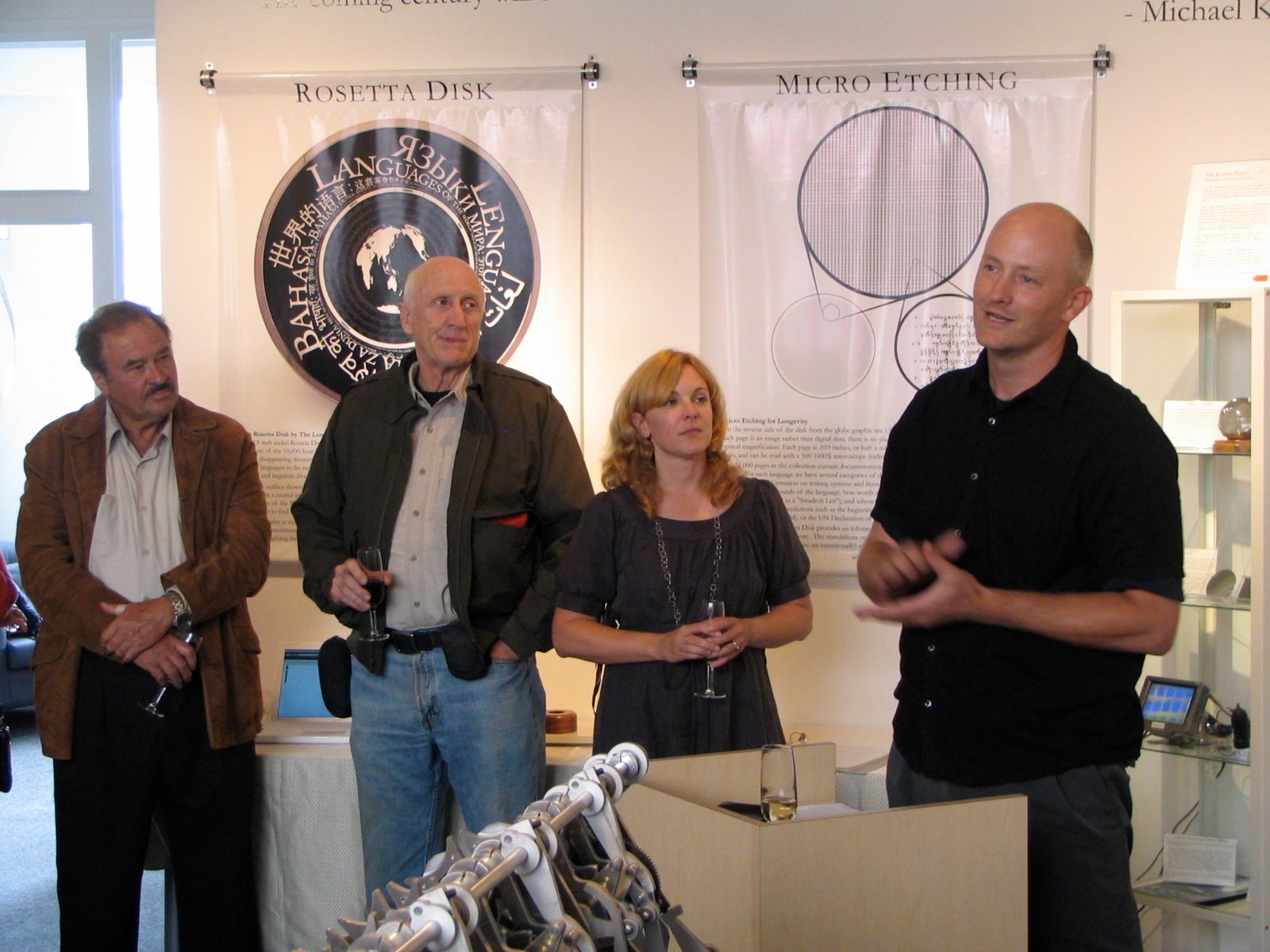
Along with a dedicated core of early colleagues, Zander helped develop a diverse set of projects that, in their ways, would help foster long-term thinking in the world. These projects included the Rosetta Project, a global collaboration of language specialists and native speakers that aims to preserve the world’s languages using long-term archival devices like microscopically etched disks, and Long Bets, our initiative for long-term predictions and wagers for charity.


Zander didn’t just help get these projects started; he has kept them running for decades as well. Andrew Warner, who has worked as a project manager in Long Now’s programs team for the last decade, says that Zander has “basically done every job at Long Now at some point,” from Clock designer to project manager to maintenance man. Earlier this year, Zander repaired a damaged hot water heater at the Long Now offices the same day he departed on a multi-week research trip on long-lived institutions in India. Throughout all those roles, Zander has maintained his unique sensibility and perspective on leadership. Former Long Now Director of Strategy Nicholas Paul Brysiewicz describes this perspective as a certain “pragmatism” that “does not suffer needless philosophizing.” Long-time Long Now Director of Programs Danielle Engelman cites Zander’s “clear decision-making process after weighing key options & opportunities” as having “kept Long Now's projects and programs moving forward at a pace that belied the small team working on them in the beginning.”
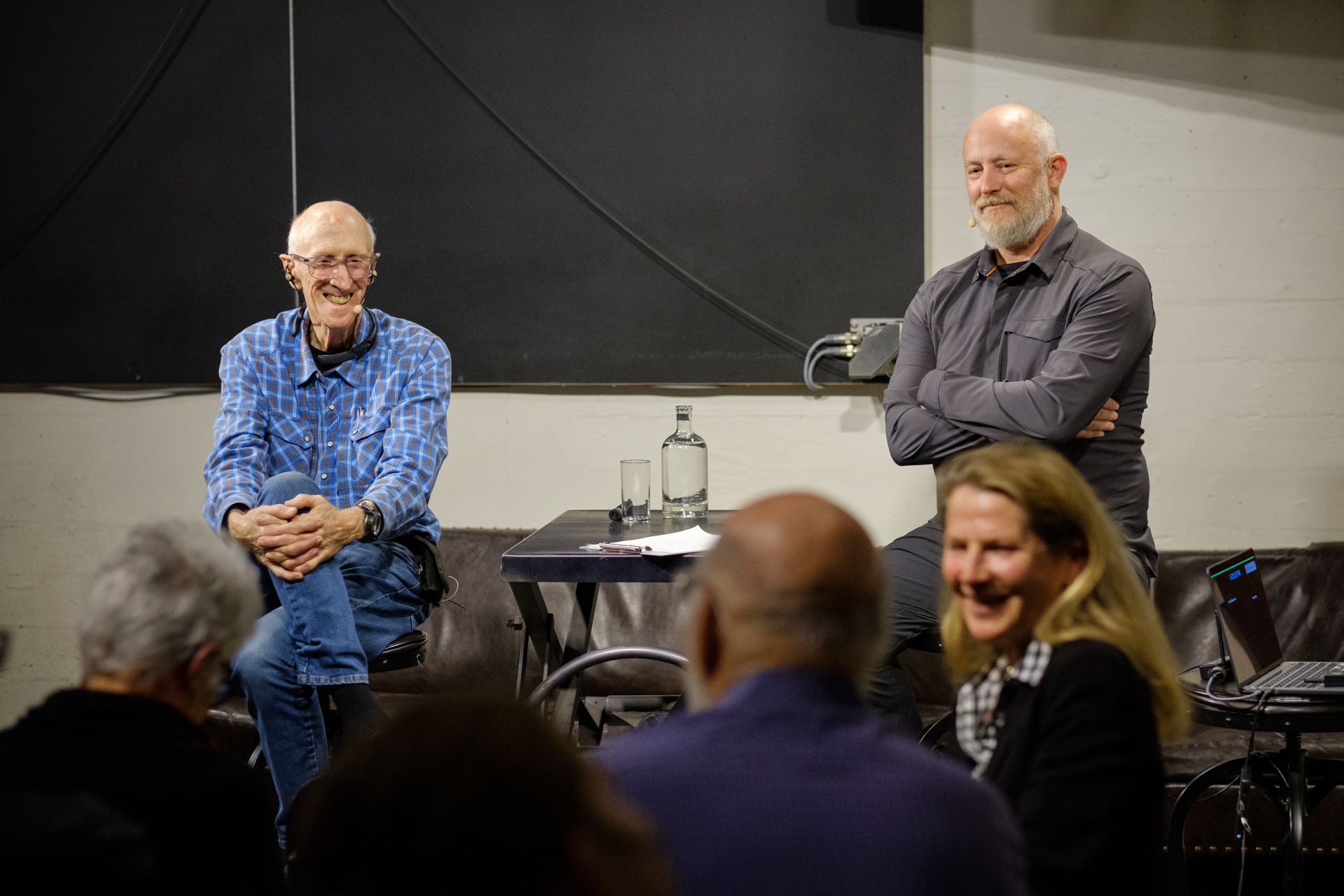



Over the years, Zander has also taken a lead role in one of Long Now's longest-running projects: our speaker series. Since 02020, Zander has acted as the host and co-curator for Long Now's main talk series, bringing together perspectives on long-term thinking from everyone from science fiction authors and artists to scientists, sociologists, and political leaders.
These projects, along with The Clock, helped build a mythos around the Foundation over the years. With this cultivated mythos came interest from the broader culture, with many around the world expressing interest in becoming more involved with Long Now’s work. In response, Zander worked to establish Long Now’s membership program in 02007. According to Danny Hillis, “he really led the idea of the membership program and supported Long Now members. And I think that the original board didn’t really see the potential of that the way that Zander did, but we trusted his intuition on that.”
The Interval
As Long Now entered its adolescence as an organization, Zander began to research the world’s longest-lasting institutions — groups that had lasted for more than a millennium from businesses to religious orders. As he studied the records of these organizations, he began to notice a particular, unexpected commonality: across continents and cultural contexts, many of the longest-lived institutions were those that served and produced alcohol, from German breweries to Japanese Sake Houses.
For Zander, the obvious corollary to this finding was to open up a cocktail bar. At first, Long Now’s Board of Directors was skeptical. Running a bar is complicated, and a task far from the core competencies of Long Now at the time. As Andrew Warner put it, “Opening a successful bar is really hard and people didn't really ‘get it’ until it was done.”
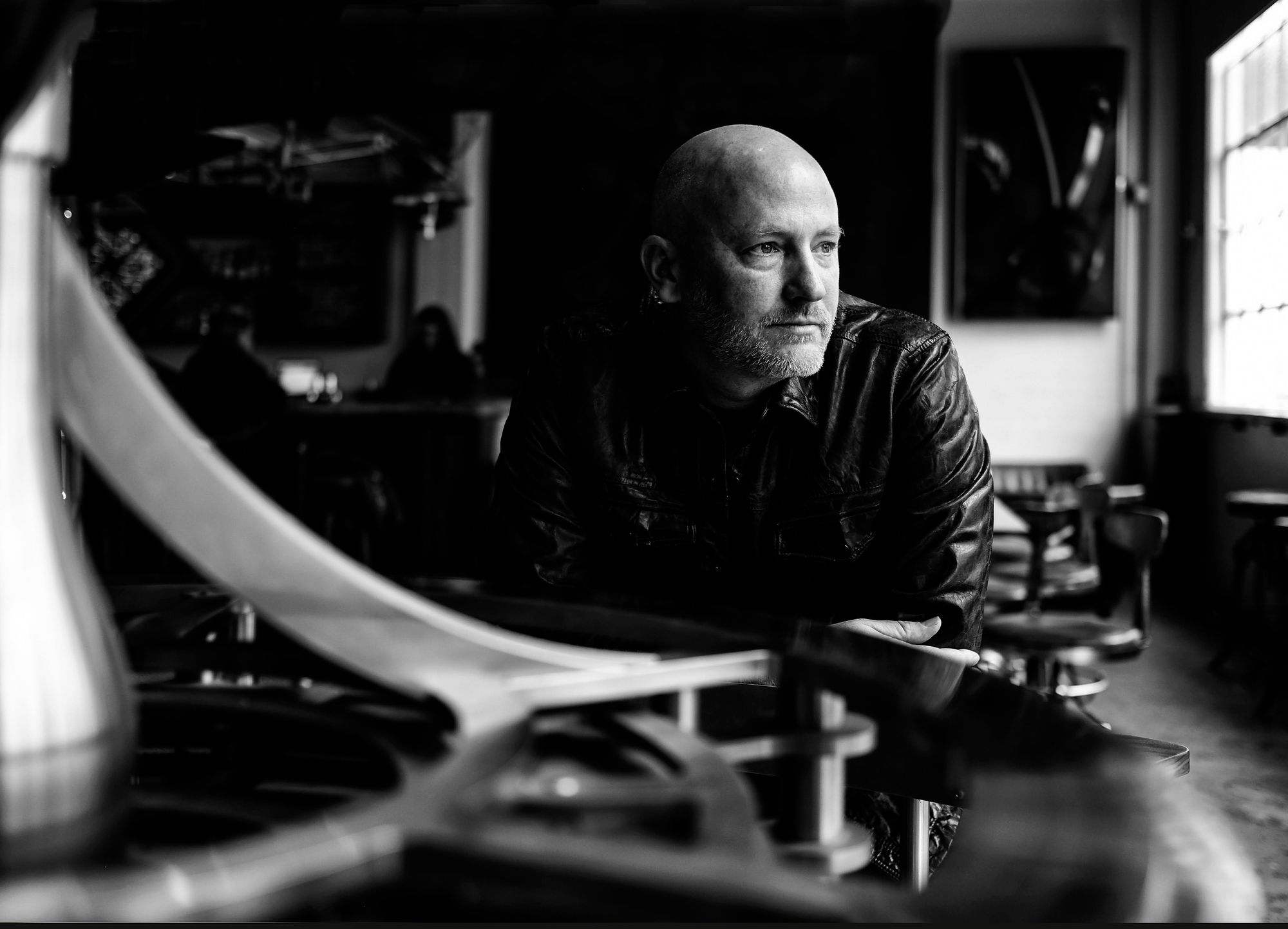
But Long Now collectively put their trust in Zander, and he delivered. The Interval, which opened in 02013 after an extensive crowdfunding campaign was “pure Alexander,” per Stewart, with Zander’s fingerprint on everything: its “invention, funding, and peerless delivery.” Danny noted that Zander was especially adept at “getting all the permissions for getting things to happen at Fort Mason,” requiring Zander to use his “political finesse” to navigate the bureaucratic structures of working on federal property.
The Interval, which took the former space of Long Now’s museum and offices and turned it into a world-class cocktail bar, café, and gathering place, was thoroughly shaped by Zander’s influence. As Andrew recounted to us, he even “took the first doorman shift” for the bar’s opening day. Yet perhaps nothing about The Interval’s design speaks to Zander’s unique perspective more than the bar’s Gin Robot. As Nicholas Paul Brysiewicz describes it, “the gin robot at The Interval is the one thing I associate with Zander alone. It’s quintessentially his. It makes billions of gins. It lights up. The lights change color. The only ways it could be more Zandery would involve pyrotechnics.”
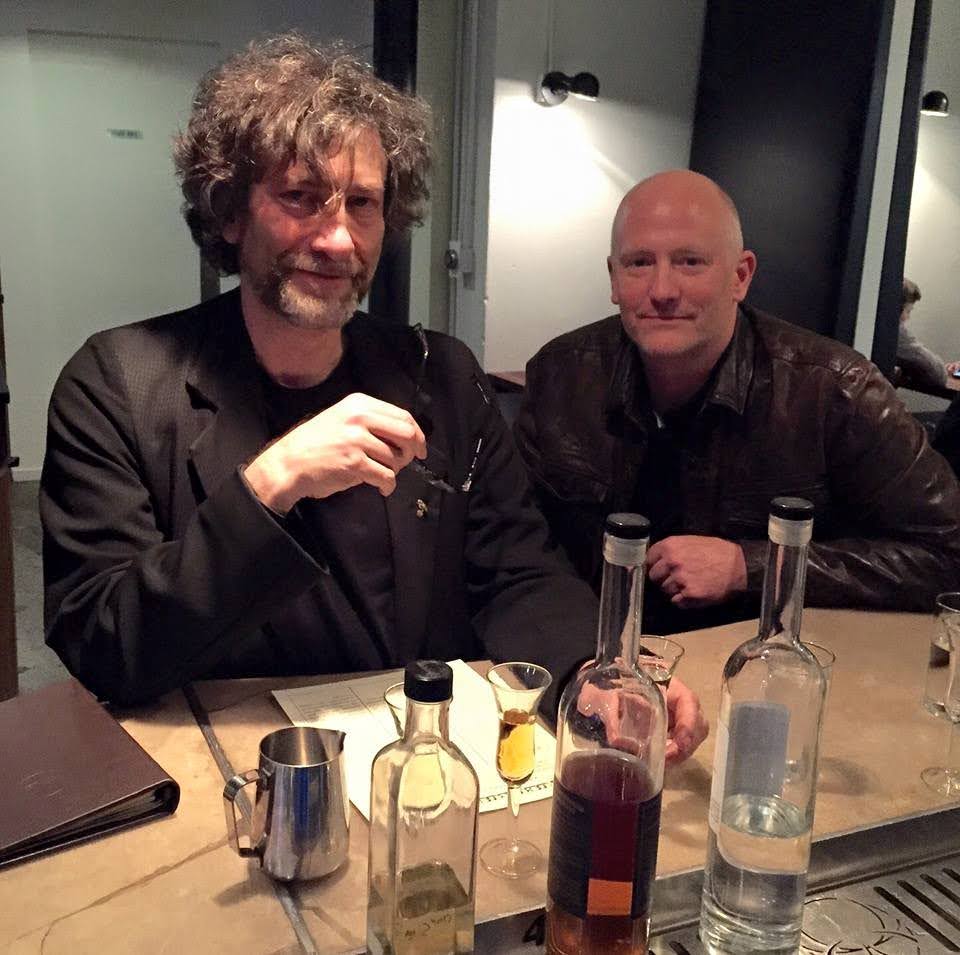
Over the past decade, The Interval has become more than just a place to get expertly-crafted cocktails and view the collection of Long Now’s Manual for Civilization. Under Zander’s supervision, the bar has become a place to tell — and to continue — Long Now’s story, a headquarters with a mythos all its own.
Travels
Zander’s time at Long Now did not, of course, keep him confined to our offices in Fort Mason in San Francisco. In Long Now’s early days, he traveled extensively with Danny, Stewart, and other board members to explore sites in the American southwest and beyond to find an eventual home for The Clock of The Long Now. As part of that process, Zander became an accomplished rock climber and cave explorer, venturing hundreds of feet into the depths of caves in Texas or mountains in Arizona.




Eventually, Long Now landed on a site at Mount Washington, on the border between Nevada and Utah in the Great Basin, as a likely choice for The Clock. Zander served as a de facto leader for the Long Now team as they explored the many crags and crevices of the mountain. As Danny recounted, “in dangerous situations it's always good to have somebody in charge who's making the decisions and Zander was the one to do that.”
After years of exploration of Mount Washington, Zander and the rest of the team thought they had found nearly all of the useful approaches and pathways within. Yet one particular entrance still eluded them. Inspired by the Siq, a narrow, shaft-like gorge that serves as the grand main entrance to the classical Nabatean city of Petra, Danny and Stewart had imagined a similar pathway as the main approach to The Clock. For years, they searched for it to no avail, until June 21, 02003.
On that day, Zander found a certain opening in what first seemed to Stewart and Danny, his travel companions, to be a “sheer cliff” face on the west side of the mountain. Zander found his way through that passage, a Class 4 crevice, ascending 600 feet alone. “Henceforth,” Stewart told Long Now, “it is known as Zander’s Siq.”





Once the potential sites for The Clock were identified, Zander’s travels did not stop. Instead, he took on a role as a kind of international ambassador for Long Now and for long-term thinking broadly. Those travels have taken him everywhere from the Svalbard seed bank and the far reaches of Siberia to the Hoover Dam, the 1400-year-old Ise Shrine in Japan, and the ancient stepwells of India.
Danny, who accompanied Zander on an early trip to Japan for the rebuilding of the Ise Shrine, which has occurred every 20 years since 00692 CE, recounted that the two of them had been two of the few westerners invited to the rededication ceremony, and the “amazingly moving” feeling of being there with Zander. Afterwards, the Long Now traveling party went to one of the area’s “bottle keep” bars, where patrons can leave part of a liquor bottle reserved for future use for an indefinite period of time. Zander explained to the bartender that Long Now would be returning to the bar in twenty years — in time for the next rebuilding of the shrine. While the bartender was at first skeptical, Zander managed to convince him that they’d actually be back — spreading the word about Long Now along the way. That encounter also ended up inspiring Zander to create The Interval’s own bottle keep system, which can, of course, be used more frequently than once every two decades.
Futures
While 02023 marks the end of Zander’s time as Long Now’s Executive Director, his work with us is far from over. He will continue his work on The Clock of the Long Now as its installation continues. He will also continue to work on organizational continuity, discovering the lessons behind the world’s long-lived institutions, with plans to pull them into a first of its kind book. He will also continue to be a dedicated member of Long Now’s community, a vital part of the culture that he has fostered over the last quarter century as we go into our next quarter century. Thank you, Zander.

Join our newsletter for the latest in long-term thinking
Subscribe